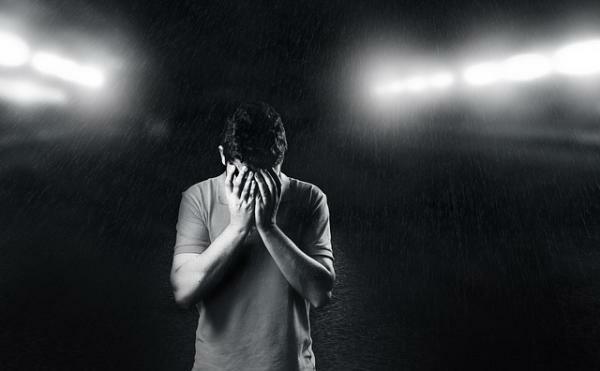
It arises from the work of Friedman and Rosenman, who define the pattern of coronary or Type A risk behavior, as a: complex of action-emotion characteristics, displayed by individuals who are engaged in a chronic effort to obtain an unlimited number of poorly defined things of his environment, in the shortest period of time and, if necessary, against the opposing effort of other things or people of his same environment.
According to Friedman and Rosenman, the traits that characterize the Type A person are the following:
- an intense and constant desire to achieve goals established by the individual himself, but usually poor;
- a marked tendency to competitiveness;
- a high achievement motivation;
- involvement in several tasks and jobs at the same time: tendency to hastily perform all kinds of functions, both physical and mental;
- and a permanent state of alert.
The most critical aspects of Type A behavior are excesses of aggression, haste, and competitiveness. Thus, people who typically display this particular pattern of behavior are called Type A individuals, and Those who display the opposite type of behavior - a satisfactorily relaxed, unhurried, and mature style - are
The Type B person may also be interested in progressing and winning, but they tend to proceed with the rhythm of life, more constantly striving against it. Thus, the Type A behavior pattern is defined as a motivational-emotional set, but basically Type A, which defines this pattern of behavior. behaviour It is his peculiar style of coping, based on an abusive use of active strategies, together with the presence of emotional responses of hostility and haste; which are responsible for its dire consequences.
However, the pattern of Type A behavior It is not only defined by the possible negative effects in its interaction with stress, but also by the positive ones. From this approach, the effects of stress, both positive and negative, occur jointly and indissolubly. The positive effects that Type A would obtain from its interaction with stress will focus on achieving social recognition, obtaining material goods, high self-esteem and a feeling of abundant physiological energy to cope with any problem, as a consequence of excess production of norepinephrine.
On the contrary, the negative effects will also be broad, affecting cognitive, behavioral and physiological activity in the short and medium term; and long-term coronary episodes. Thus, negative effects appear as unintended side effects of positive effects.
High levels of cholesterol and triglycerides The existing evidence shows that the Type A behavior pattern is not genetically determined, but is acquired. There are two types of antecedents that determine the development of Type A:
- Some are external to the individual and primary in terms of their action, social and cultural background;
- and others are internal and secondary in their action, the personal antecedents derived from the learning process.
We can conclude that the cognitive-behavioral factors predisposing to the development of coronary disorders and persistence in the behavior pattern They are composed of behavioral and cognitive strategies, as well as limitations and deficiencies in coping skills that are reduced to strategies active; Although they reduce stress, they nonetheless increase the risk of developing disorders.

In any coping situation, other structural aspects intervene such as beliefs, commitments, previous personal history of coping, etc.
It is necessary to differentiate between coping styles and coping strategies:
- Coping styles: personal predispositions to face situations and are responsible for preferences individuals in the use of one or other types of coping strategy, as well as their temporal stability and situational.
- Coping strategies: specific processes that we use in each context and are highly changeable depending on the triggering conditions.
There are three basic dimensions along which different coping styles are situated:
The method used in coping:
- Coping style active: mobilizes efforts for the different types of solution of the situation.
- Coping style passive: do nothing directly about the situation, but simply wait for the conditions to change.
- The coping style of avoidance: avoid or flee from the situation and / or its consequences.
The targeting of coping:
- addressed to trouble: manipulate or alter the conditions responsible for the threat.
- directed to the emotional response: reduce or eliminate the emotional response.
- addressed to Modify the initial assessment of the situation: reassessment of the problem.
The mobilized activity in coping:
- Coping style cognitive: the main efforts are cognitive.
- Coping style behavioral: main efforts are for manifest behaviors.
Selye distinguished between a type of stress that would be positive and that he called pleasant (enstress) and another type that would be negative and named unpleasant (distress). These two types of stress are in turn independent of the magnitude and intensity of the stressor. Whether stress is positive or negative depends on the degree of control that can be exercised over the stressor: a) If the stressor is controlled and predictable, even sought by the person, we would have that stress positive. b) If the stressor is uncontrolled and unpredictable for the person, we would have negative stress. A trigger or stressful event is uncontrollable when the probability of said event occurring is independent of the subject's response. On the contrary, a trigger or stressor is controllable when the probability of its occurrence depends on the response emitted by the subject.
Exposure to uncontrolled stressors mobilizes the stress response pattern, in addition to producing important changes in the person's behavior. On the other hand, we can say that a stressor is predictable by a stimulus, when the probability of the stressor in the presence of the stimulus is greater than the probability of the stressor in the absence of the stimulus. On the contrary, it is unpredictable if the probability of the event in the presence of the stimulus is equal to the probability of the event in the absence of the stimulus. Being able to predict the occurrence of a stressor produces positive effects throughout the process: it generates less psychophysiological activation, less negative emotional response and a less stressful assessment of the situation. Seligman denominates afraid the acute emotional state that arises when a signal predicts a stressful event and calls anxiety, the chronic fear that occurs when a stressful event is near or is unpredictable.
This article is merely informative, in Psychology-Online we do not have the power to make a diagnosis or recommend a treatment. We invite you to go to a psychologist to treat your particular case.


